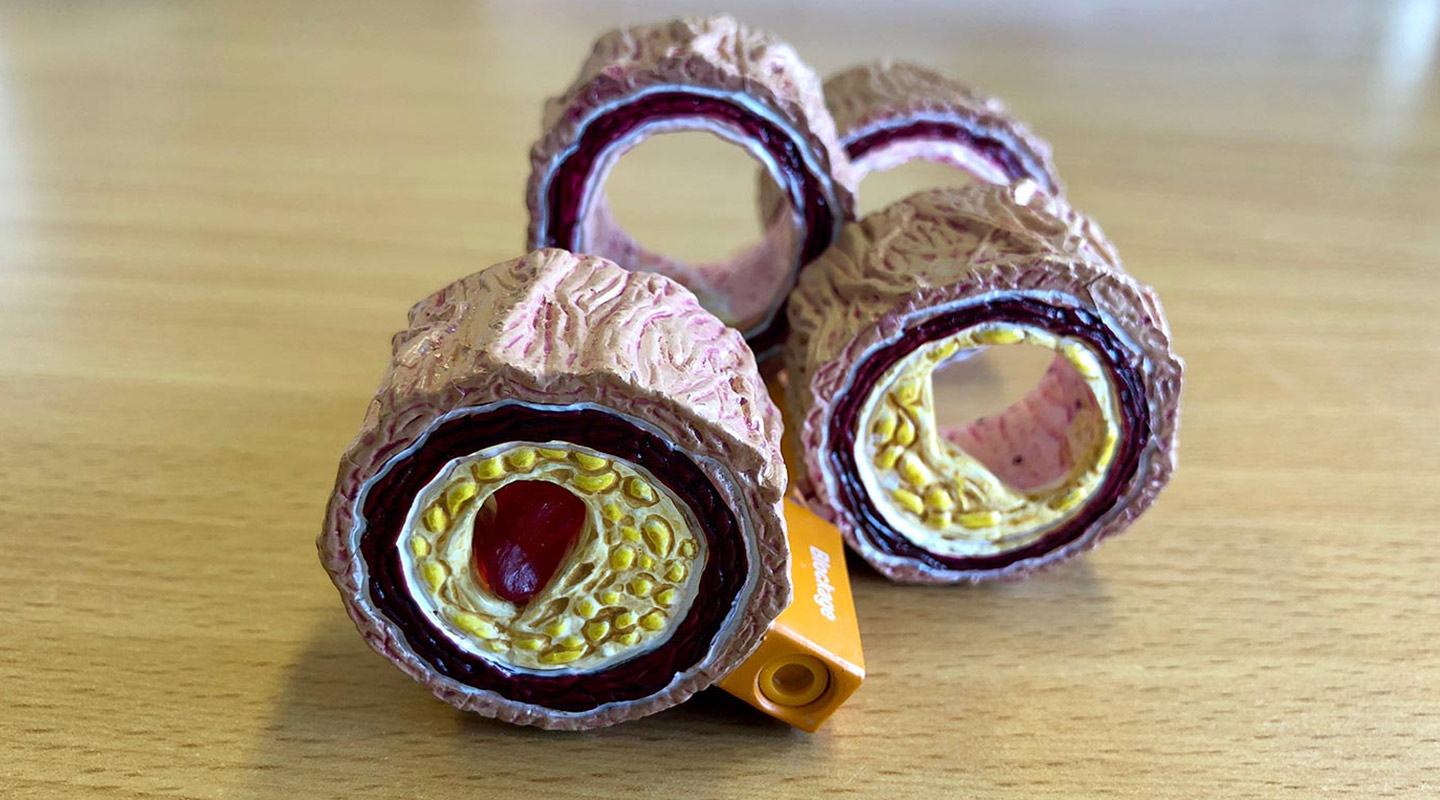Dear readers, With the launch of e-newsletter CUHK in Focus, CUHKUPDates has retired and this site will no longer be updated. To stay abreast of the University’s latest news, please go to https://focus.cuhk.edu.hk. Thank you.
No Dress Rehearsals for Heart Attacks
But drills can save, says Polly Li

Heart disease is the No. 1 killer globally. Its most extreme form, of course, is a heart attack. We know it’s vitally important for a patient to get help as soon as possible should one strike.
So why do so many patients delay so much in seeking care? It takes three hours, on average, for the victim of a heart attack in Hong Kong to request medical help. This delay is ‘unacceptably long,’ in the eyes of Prof. Polly Li, an assistant professor in The Nethersole School of Nursing at CUHK.
Professor Li has made it her job to improve the situation. It’s one she knows intimately. Prior to joining the University, she spent four years in the cardiac care unit of Hong Kong’s Queen Mary Hospital, where she saw many patients who waited before heading to hospital. ‘The clinical impact is huge for a delayed presentation,’ she says.
The time between the onset of symptoms of an acute myocardial infarction, the scientific name for a heart attack, and the start of treatment is known as the ischemic time. For a heart attack, it is the critical determining factor of the outcome. Early treatment often means successful treatment; a delay may be a death sentence.
The bulk of research into heart-attack treatment focuses on what happens in the hospital. There has also been a push to shorten the in-hospital delay. But this has done little to improve the overall risk. The delay before the patient decides to seek care amounts to two-thirds of the ischemic time, leaving plenty of room for improvement.
International guidelines indicate patients should ask for help within five minutes of the onset of a heart attack. Professor Li interviewed 301 heart-attack patients in Hong Kong, showing a median wait of 3.0 hours before going to the emergency room, up on the global average of 2.0 hours.
Patients may develop life-threatening arrhythmias during the early onset of the attack, which contribute to cardiac deaths before they arrive at the hospital. Of the 9,186 Hongkongers admitted to hospital in 2017 while suffering a heart attack, 20% died.

There are many reasons why patients put off getting treatment. Many patients with heart-attack symptoms wait to see how they will develop. They may not know how critical early treatment is.
Then there’s denial. Some patients may know there’s an issue with their heart. But they may not want to admit something as serious as a heart attack is happening. ‘A heart attack is quite frightening, so they try to convince themselves it is not a heart attack,’ Professor Li explains.
There are plenty of ‘contextual decisions’ that have nothing to do with the disease. The patient may be at work, and avoid any disruption. Many patients don’t want to be a burden to their family. Rather than distressing family members, they pretend everything is normal. It’s a unique concern in Hong Kong that patients see going to hospital as a ‘waste of time,’ and even of public resources.
Professor Li’s findings show that successful treatment relies both on labelling the illness accurately, with a layman’s diagnosis, and then interpreting how it will progress. Other diseases may have repeat episodes, giving patients time to rehearse and improve how they should behave. But there are no dress rehearsals for a heart attack – patients have to respond immediately to an unfamiliar crisis.
Previous efforts to improve the care-seeking delay involved mass media public service announcements, and individualized health counseling. But the results in both cases were disappointing.
Professor Li is conducting a trial that brings heart patients together in small groups that often end up forming a support structure. The trial has so far recruited 200 participants in the cardiac clinic of four Hong Kong hospitals, and two heart-care support groups.
The study involves three weekly 90-minute sessions, followed by a booster session one month later. The goal is to ‘enhance skill acquisition and retention’ – broadening a patient’s knowledge, but also ensuring they are prepared to act.

Listing out symptoms provides only one form of knowledge. It is less useful, Professor Li’s work shows, than rehearsing how to respond. ‘Peer sharing’ among patients of their experiences with heart problems or attacks is also highly effective in getting patients to imagine various forms of the disease.
Participants watch a video of a model patient going through a heart attack. The patient enacts the various cognitive processes, including sensing the symptoms, interpreting them, and seeking care. The moderator, a cardiac nurse, pauses the video to ask what patients would do, and give tips on how to react. The nurse also encourages participants to discuss their concerns surrounding these care-seeking decisions.
Participants say that the content is useful, particularly the mental rehearsal of what to do. It’s the first time anyone has applied this cognitive approach to handling heart disease. Professor Li’s preliminary analysis shows encouraging results in the way patients intend to respond. Now she is waiting to see if that translates into real-life results.
By Alex Frew McMillan
This article was originally published on CUHK Homepage in Dec 2018.